Editor's note: David Bull kindly wrote to Micscape sharing his ingenious and versatile microscopy set-up. David writes:
I thought you might be interested, (or at least some of your readers!), in the way I have got into microscopy and how I do it on a shoestring. As I am disabled and on a low income, most of the things I want in life have to be got in other ways than buying new!I keep and breed tropical fish and have got interested in the other life forms in my tanks. Spotting a Nikon SMZ in the local boot market, less eyepieces and in a terrible dirty state, I took a chance and bought it for "an old song". Being a bit handy at most things, I reconditioned it and got some Olympus x20 eyepieces from a place in Scotland for £25 (s/hand!) and away I went.
Being a zoom stereo it gives me up to x80 and I found this was not enough for me, but when I looked at the price of other microscopes, I was dismayed and had to think of other ways of "seeing" these creatures.
I do have a good computer, which has a Creative Labs "Go-Plus" web camera attached, this has a good 1/3rd inch CCD sensor in it, so I thought about using it with the microscope. I carefully removed the lens from the camera and from an old plastic torch and fish tank filter tube, constructed an attachment for it to the Nikon. As the camera is built only to use fluorescent light I purchased on the boot market (again!), a 4" fluorescent torch, of the type that has a torch, fluorescent tube and flashing lamp. This I built into a plastic box, with a 6V rechargeable battery pack and using a lens with an iris, (from what, I have no idea!), fabricated a fluorescent light source.
I have also made a fitting for the light unit base that was with the Nikon, that takes a sidelight lamp from a car (12V), that I use when viewing direct. A friend in my amateur radio club got me a mechanical stage, and I have fitted this to the Nikon. It had to be fitted 2" above the base to accommodate the vernier controls but there was just room to be able to raise the scope enough.
I have since obtained another microscope that has no name or info on it and adapted that for the camera as well. Actual measurements using a Weber counting chamber as the object give me up to x600 on the 17" computer screen!
Attached are some photos of the "lashup" as I call it, and also some of the pics I have taken, although I mainly take short videos as I find these more interesting to others than still pics. Hope this is of interest to someone, it sure is to me.
Comments to the author David Bull are welcomed.
Microscopy on a Shoestring Part II, where the author describes ingenious ways of adapting his digital cameras to a compound microscope can be read here.
Visit the author's home pages where he shares further information and his other interests.
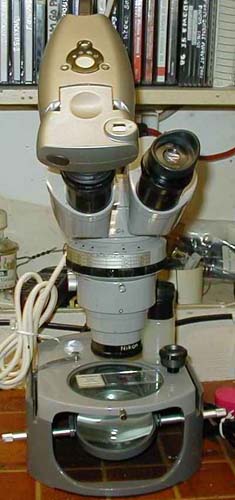
Nikon SMZ stereo with Creative Labs 'Go-Plus' webcam attached using the author's homemade adaptor.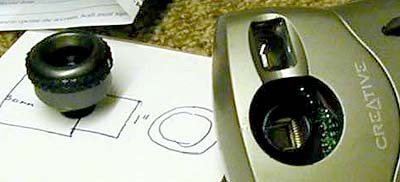
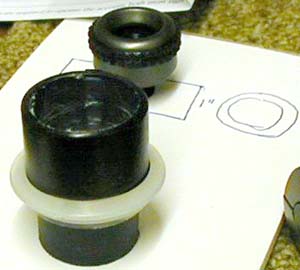
Detail of the webcam without lens and the adaptor (foreground) to attach it to one eyepiece tube of the stereo microscope. (The webcam lens is shown top left).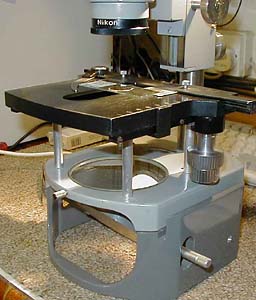
The mechanical stage adapted to attach to the stereo microscope. This gives good control of subjects on microscope slides while viewing and projecting the image onto a monitor/image capture on the PC.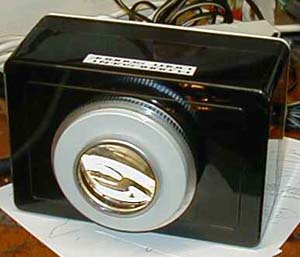
The author's homemade fluorescent lamp unit for the stereo microscope when using the webcam. This sits in the base of the stereo microscope.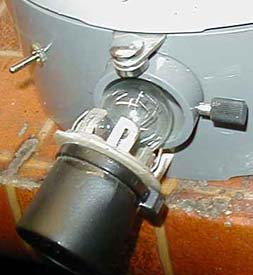
Detail of the uprated Nikon lamp unit for visual transmitted light studies with the stereo microscope. A 12V car side lamp is used.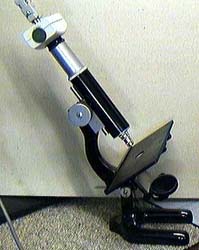
The 'no name' but quite usable compound microscope with a webcam attached to project the image onto a monitor/image capture on the PC.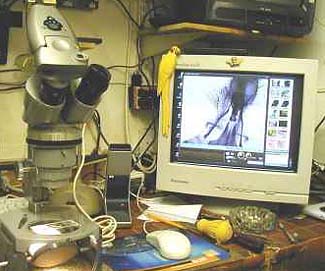
The overall set-up for studying stereo microscope images on the monitor/image capture.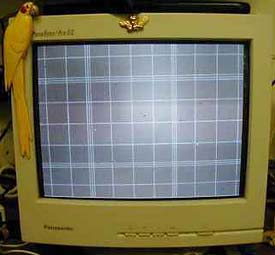
Projecting a counting slide graticule onto the monitor shows good control of distortion and allows both size calibration and the field of view to be assessed.A selection of images taken with the above set-up
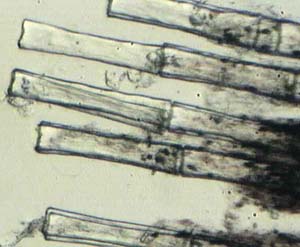
End of the fin of a fish (stereo microscope).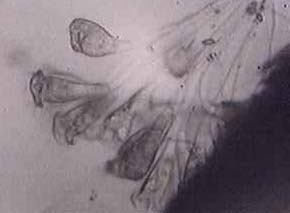
Vorticella colony (stereo microscope).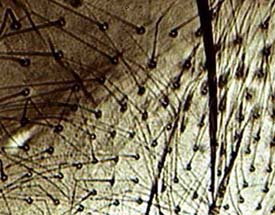
Hairs on an insect's eye (compound microscope).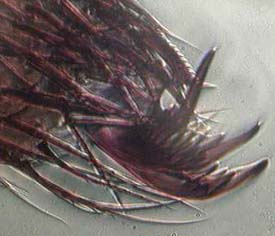
Detail of a spider's foot (stereo microscope).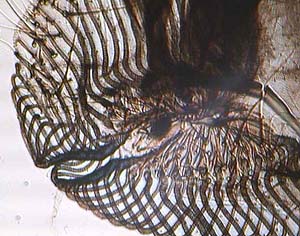
Detail of a fly's tongue (stereo microscope).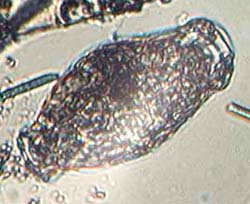
Rotifer (stereo microscope).